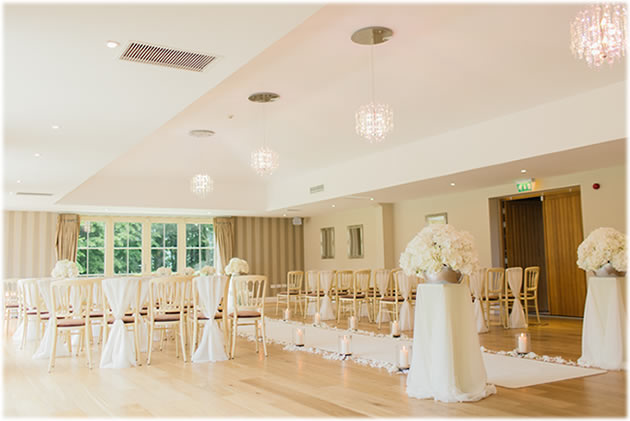How to Knot Pearls: Real, Glass, and Cotton | Beading
Picture yourself dancing at a wedding. Twirling on the dance floor, lost in the moment. You accidentally catch your necklace, and then—drat! There go all your pearls, strewn across the dance floor, under chairs and tables, lost forever. Or! Maybe you knotted your pearl strand and your necklace easily held in your hand while you continue to dance the night away. Knotting not only helps prevent a disaster like this, but also helps give each bead a little space so you can appreciate their beauty. Knotting offers a professional finish and creates a flexible design with beautiful drape. To follow are instructions for how to knot pearls using different materials—you can use these materials with your knotting tool of choice.

Knot a Glass Pearl Necklace
Materials
- B-Lon Cord, TEX 210, 2 strands
- 40 pearls ranging in size
- Knot-a-Bead, Knotter Tool [affiliate link]
- collapsible-eye beading needle, heavy
- flat-nose pliers
- round-nose pliers
- G-S Hypo-Cement [affiliate link]
- scissors

Steps
Stringing the Pearls
- Add a needle to one strand of B-Lon. Thread pearls on.
- If the stringing hole is large enough, remove the beading needle then thread the needle onto a second strand of B-Lon (use the round-nose pliers to open the eye, if needed). Work the needle and B-Lon through the pearls in the same direction as the first thread. Use the flat-nose pliers to pull the needle through, as needed.
Knotting
- Remove the beading needle. Using both strands of B-Lon, place an overhand knot about 3-inches from the open end.
- Slide the first pearl up to the knot.

- Use the Knot-a-Bead to form a knot on the other side of the first pearl.

- Slide a second pearl so it meets the knot formed in Step 4. Form a new knot so it rests right up against the pearl.

- Place the 3/4″ spacer onto the two strands so it rests against the last knot formed. Form a knot so it rests on the other end of the spacer.

- Remove the spacer and slide up a pearl. Place a knot on the other side of the pearl.

Repeat knotting, spacing, and adding pearls in any pattern you like.
Finishing
- Once you have finished knotting all pearls into place, trim the thread ends about 3 inches from the spools.
- Use a surgeon’s knot to tie the two ends of the necklace together (all 4 strands), forming the knot near the first knot, so it’s hidden. Apply a bit of G-S Hypo-Cement and allow to cure. Trim the ends after the adhesive has cured.
Make a Pearl Necklace with a Clasp
Inspired by my love of cartoons and television, this necklace reminds me of something Wilma Flintstone might wear. I happen to have a costume party coming up, and this will be the perfect accessory!

Materials
- beads, Miyuki cotton pearls
- clasp
- silk thread with needle attached
- French wire
- scissors
- Bead Knotter [affiliate link]
- bead reamer*
- Optional: G-S Hypo Cement, collapsible-eye beading needle
*NOTE: If you’re using cotton pearls, you only need an awl to expand the hole.
Steps
- Determine the length of your finished necklace. Cut a length of thread 5 times your planned finished length (80” for a 16” necklace). Place a knot onto the end of the thread. Ream the stringing hole of 4 beads; two will be used in the beginning and two will be used at the end of your project.
- Thread on two of the pearls you drilled, a length of French wire, and the loop of one-half of the clasp. Slide everything down to the end of the thread, leaving about a 6-inch tail. Pass the needle back through the first pearl and cinch it up so the French wire curves and rests over the loop in the clasp.

- Tie an overhand knot using the tail end and the working thread. Pull the knot tight so it rests against the pearl closest to the clasp.

Note: Always make overhand knots in the same direction throughout the design so they are uniform, giving you a professional finish.
- Pass the needle through the second pearl and slide the bead against the first knot. Make an overhand knot using the tail thread and working thread.

- Thread on the remaining beads in your pattern, except for the last two and the second half of the clasp.

- Create a knot using the Bead Knotter. Slide up the next bead in the pattern.

A Quick Tutorial on Using the Bead Knotter
- Position the loose beads in your nondominant hand and the clasp end on your dominant-hand side.
- Form a V with your index and middle finger. Wrap the thread and pearls of the clasp-end up and over your index finger, across, down and around your middle finger to form a loop. Pass the clasp end and pearls through the loop.

- Slip the awl through the top of the loop.
- Place your dominant index finger against the thread on the awl so it doesn’t pull off too soon (the awl point is sharp, beware!).

- Pull the clasp end to tighten the loop against the awl.

- Hold the bead knotter in one hand and place your thumb under the tab. Place the working thread over the fork.

- Hold the working thread firmly while pushing your thumb upward against the tab. The knot will slide up and off the awl. Pull the thread so the knot tightens up filling the gap where the awl was.

- Thread on the next bead and place against the last knot.
- Repeat placing knots between all of your beads except for the last two.
- Thread on the last two beads, a section of French wire then the other loop of the clasp onto the working thread. Bring the thread back through the last strung bead. Pull the thread so the French wire curves over the loop of the clasp and the beads are tightened up.

- Tie a half-hitch knot between the last two beads and pull tight.
- Bring the working thread through the second to last bead. Apply a dab of G-S Hypo-Cement to the first knot on both ends for added security. Allow the adhesive to cure; then trim the thread on both ends of the necklace.
Once you have the hang of this technique, you can create knotted pearl designs to your hearts content. You can even create a second income with this skill.
Related: Jewelry Artist Podcast: Passionate About Pearls with Tammy Jones
Originally published 10/14/2019. Updated 11/17/2022.






